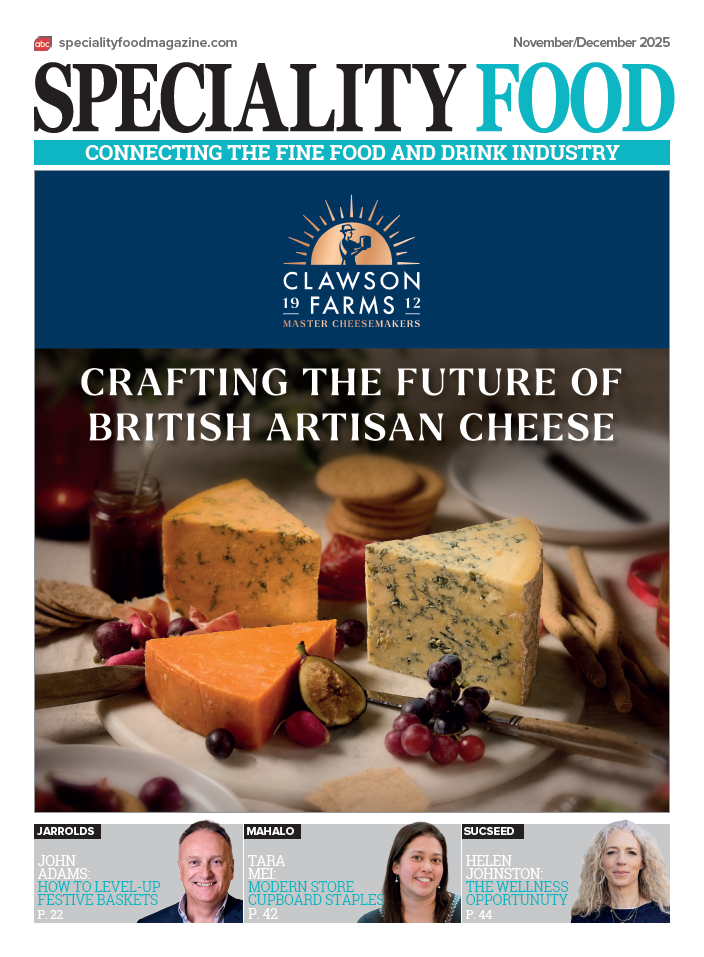404 - This page doesn't exist
Why not try searching our website
or try these popular searches
you may be interested in
-
Happy Christmas from Speciality Food
11 December 2025 ChristmasThe team reflects on 2025, and is looking forward to an exciting new year -
Inspirational Cheese Retailers 2025: Crosby Cheese & Charcuterie, Crosby
08 December 2025 Cheese & DairyJoin us as we celebrate some of the best cheesemongers in Britain - this week shining a light on Crosby Cheese & Charcuterie in Crosby -
‘Things I wish I’d known when I was a new cheesemonger’
06 December 2025 Cheese & DairyAre you new to the art of serving cheese, or just learning the ropes? Here, specialist cheese retailers tell us what they wish they’d have known at the beginning of their careers -
What should everyone have in their store cupboard?
04 December 2025 AmbientThe way Brits eat is changing – and ambient foods are at the forefront of the evolution -
Inspirational Cheese Retailers: Metz Cheesemonger, Farsley
03 December 2025 Cheese & DairyJoin us as we celebrate the best cheese retailers in the UK - this week shining a light on Metz Cheesemonger in Farsley -
A guide to selling Italian food and drink
03 December 2025 AmbientItalian cuisine is adored by Brits – here's why, and how to make the most of this valuable opportunity -
15 last minute ways to maximise sales this Christmas (and New Year)
01 December 2025 ChristmasEnd the year on a high by using some of our simple suggestions to make the very best of these last few retailing weeks before 25th December -
Britain’s Best Delis: Arcadia, Belfast
28 November 2025 DelicatessenAs part of our series exploring the delis and food halls of the UK, Speciality Food heads to one of Belfast’s most sought-after postcodes -
Budget 2026: The food, drink and retail industries react
26 November 2025 BrexitVoices from across the UK share their thoughts on Rachel Reeves’ autumn Budget -
Opinion: ‘The government needs to back raw milk’
25 November 2025 Cheese & DairyThe impact Lumpy Skin Disease (LSD) has had on the dairy industry and retail is being felt across Europe. Patricia Michaelson, founder of La Fromagerie thinks the government needs to do more

